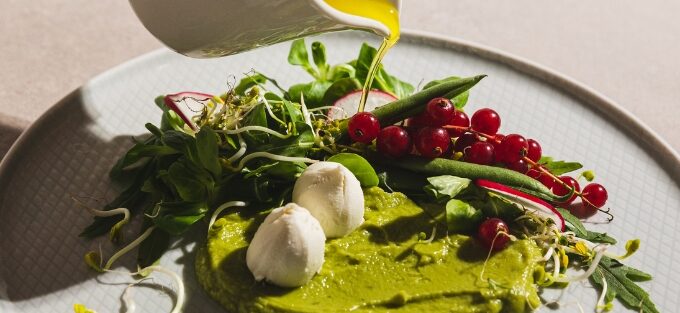Introduction
Food is one of the most potent ways to connect with different cultures. Every dish tells a story of heritage, geography, and tradition. As global cuisine gains popularity, more people are turning to international culinary courses to explore these flavors.
You can experience hands-on training, authentic recipes, and cultural insights with programs like CHO Bee Labs. This article will guide you through how these courses expand your cooking skills, introduce you to authentic techniques, and immerse you in the cultural roots of food.
Why International Culinary Courses Matter
A Gateway to Global Cuisine
International culinary courses allow you to experience cuisines beyond your local palate. You learn recipes and the authentic methods that bring out their true taste. Whether it’s French pastries, Japanese sushi, or Middle Eastern spices, programs such as those at CHO Bee Labs introduce you to flavors with depth and authenticity.
Building Professional and Personal Skills
If you’re a culinary professional, these courses strengthen your career by broadening your skill set. For home cooks, they elevate your ability to cook confidently for family and friends. You also develop time management, creativity, and presentation skills that are highly valuable inside and outside the kitchen.
What You Learn in International Culinary Courses
Exploring Traditional Techniques
Each cuisine has its own secrets. You’ll learn knife skills from Japanese chefs, fermentation techniques from Korean kitchens, and dough handling from Italian bakers. Through CHO Bee Labs’ culinary programs, these lessons provide authenticity that can’t be achieved through cookbooks alone.
Ingredient Knowledge
Cultural food traditions rely on local ingredients. Courses often introduce you to spices, grains, herbs, and cooking oils unique to each region. Understanding how to source and substitute these ingredients helps you replicate authentic flavors in your kitchen.
Plating and Presentation
Visual appeal is central to fine dining. International culinary programs teach plating methods inspired by different regions. From minimalist Japanese plating to bold Mediterranean styles, you learn how to make beautiful and appetizing dishes.
Benefits of Joining International Culinary Courses
Expanding Your Culinary Horizons
When you cook beyond your comfort zone, you expand your creativity. Experimenting with diverse cuisines sharpens your adaptability, allowing you to combine flavors from different regions and create fusion dishes.
Enhancing Cultural Understanding
Food is deeply tied to identity. Learning international dishes fosters respect for different cultures. You don’t just prepare a dish; you know its history, symbolism, and role in daily life or celebrations.
Networking Opportunities
These courses attract diverse participants, such as students, chefs, travelers, and food enthusiasts. With training providers like CHO Bee Labs, you gain connections, exchange knowledge, and sometimes even discover business collaborations through shared culinary interests.
Types of International Culinary Courses
Short-Term Workshops
Workshops focus on specific cuisines or skills, like sushi-making, pasta rolling, or Indian curry blending. These are perfect if you want a quick yet impactful learning experience.
Diploma and Certification Programs
Professional programs offer structured curriculums covering multiple cuisines. They prepare you for careers in hotels, restaurants, and catering companies. A diploma from an internationally recognized institution such as CHO Bee Labs adds strong credibility to your profile.
Online Culinary Courses
For those unable to travel, online programs provide flexibility. They include video demonstrations, downloadable recipes, and live sessions with chefs. Although they lack physical interaction, they’re valuable for theory and basic practice.
Popular Cuisines Covered
Italian Cuisine
Learn pasta-making, pizza dough mastery, and classic sauces like marinara and pesto. Italian courses emphasize simplicity and the use of fresh ingredients.
French Cuisine
French training highlights pastries, bread-making, and gourmet meals. You’ll gain skills in sauces, desserts, and fine dining plating techniques.
Asian Cuisine
From Thai curries to Japanese sushi, Asian courses explore balance, precision, and diverse spices. You’ll also understand umami, a fundamental taste unique to many Asian dishes.
Middle Eastern Cuisine
Middle Eastern courses introduce you to aromatic spices, kebabs, and mezze platters. These programs help you master slow cooking, grilling, and layering flavors.
Choosing the Right Culinary Course
Define Your Goals
Are you aiming for a professional career or personal enrichment? Professional goals require certification programs, while personal goals may only need workshops or online classes.
Consider Location and Format
On-site programs provide hands-on training and networking opportunities. Online courses offer flexibility but may limit your exposure to practical experience.
Check Instructor Credentials
Ensure experienced chefs or culinary experts teach the course. Their background adds authenticity and credibility to your learning journey.
Evaluate Course Structure
Look for a balance of theory and practice. A well-designed course should teach you about culture, techniques, and modern adaptations while allowing you to practice hands-on.
Practical Applications of International Culinary Training
Professional Pathways
Graduates often become chefs, food stylists, culinary instructors, or restaurant owners. A strong foundation in international cuisines makes you adaptable in a competitive food industry.
Personal Benefits
For personal cooks, these courses build confidence and creativity. You’ll surprise your family with authentic dishes and gain satisfaction from mastering new skills.
Travel and Cultural Experiences
Some programs include culinary tours or field visits to local markets. Training providers like CHO Bee Labs often emphasize immersive experiences that deepen your appreciation for food culture by showing you where ingredients come from and how locals use them.
Overcoming Challenges in Learning International Cuisines
Ingredient Availability
Some regional ingredients may not be easy to find locally. Courses often guide you on substitutions while preserving the authenticity of flavor.
Time and Cost Investment
Professional programs can be costly and time-intensive. Planning your budget and aligning the course with your goals ensures you gain maximum value.
Adapting Techniques at Home
Professional kitchens differ from home setups. Courses teach you how to adapt techniques with available tools to achieve authentic results.
Conclusion
International culinary courses open the world to flavors, techniques, and cultural stories. They help you expand your skills, deepen your cultural understanding, and connect with a global community of food lovers. Whether you pursue cooking as a profession or a passion, these courses enrich your culinary journey.
With CHO Bee Labs, you gain more than training; you gain an experience that connects you to international food traditions and equips you with skills for life. Start your exploration today and bring the world to your kitchen.



